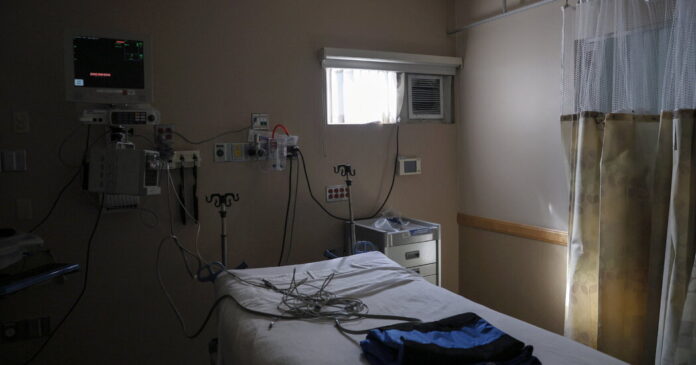[ad_1]
When a patient with a severe traumatic brain injury is comatose, in intensive care, unresponsive and hooked up to a ventilator, but not brain-dead, when is the time to withdraw life support? A small study on the fates of people in such situations suggests that doctors and patients’ families may make better decisions if they wait even a few days longer than usual.
Often, a doctor sits down with family members within 72 hours of the patient’s admission to intensive care to discuss the patient’s prognosis, and whether they want to keep their loved one alive, or to remove life support.
Experts say that many doctors would describe the outlook as grim — most likely death or severe disability. Reported outcomes of patients who had severe traumatic brain injuries show that most times the decision is to remove life support. The patient dies.
The researchers behind the new study say that their limited data suggests that doctors’ predictions so soon after the injury frequently are wrong.
The study, published Monday in Journal of Neurotrauma, used a national database that included 1,392 traumatic brain injury patients.
Sifting through the data, they ended up comparing 80 patients with severe injuries who died after life support was withdrawn, with 80 similar patients whose life support was not withdrawn.
In their analysis, the researchers found that most patients whose life support was continued died anyway in the hospital, within about six days. But 42 percent who continued life support recovered enough in the next year to have some degree of independence. A few even returned to their former lives.
Despite the study’s limitations, “this data is really helpful,” said Dr. Walter Koroshetz, director of the National Institute of Neurological Disorders and Stroke, who was not involved with the study. (The institute, part of the federal National Institutes of Health, originally funded the database used by the researchers, but it is now funded with grants from multiple sources.) The longer the family waits to decide, the better the doctors’ prognostication will be, he noted.
Uncertainty, though, is ever-present.
Doctors know, Dr. Koroshetz noted, that recovery is slow and usually goes on for months or even years. But, he said, some patients who needed ventilators and were expected to lead a life of extreme disability walk into the hospital a year later “chatting it up with the nurses.”
“That’s the problem,” he added. “People can make a good recovery.”
But those are the rare exceptions. Most who survive end up with permanent disabilities.
Recovery is not easy. Patients often have to spend months in rehabilitation centers and, for some, the ultimate destination may be a nursing home.
There is nothing scientific about making a decision within 72 hours, Dr. Claude Hemphill of the University of California, San Francisco, said. That time frame has become a convention because, he said, “these people look very sick when they come in.” As a consequence, he added, “many physicians have felt compelled to make a decision early.”
Dr. Hemphill was part of the research group that supplied the data, but he did not enroll patients or analyze it for the study.
Yelena Bodien, a neuroscientist at Massachusetts General Hospital and Spaulding Rehabilitation Hospital, said that she and her colleagues were motivated to do the study based on their own experiences.
Families visiting patients at the rehabilitation center had told her that doctors would say, “Your loved one will never be able to walk or talk or return to work,” she recounted.
But her colleagues had a different perspective, telling her, “If we don’t make a decision early, we might be committing these patients to a life they would not like.”
She said she saw the problem.
“Physicians are in an extremely difficult situation. Patients are on the cusp of life or death with incredibly devastating injuries,” she said. “Physicians are under an immense amount of pressure to provide families with a precise diagnosis.”
Families are asked what sort of life the patient would accept. There may be no easy answer. While healthy people may say that a life with a severe disability would be completely unacceptable, researchers speak of the “disability paradox”: Often when people become disabled, they report still having meaningful lives.
That’s important in advising families, Dr. Hemphill said. It means doctors must be humble not just about the uncertainty of the prognosis but also about what sort of life would be acceptable.
He hopes doctors will take the new study to heart.
“Doctors need to have an open mind,” he said. “Maybe the truth based on data is a bit different from what we were taught in medical school 20 or 30 years ago.”
[ad_2]



